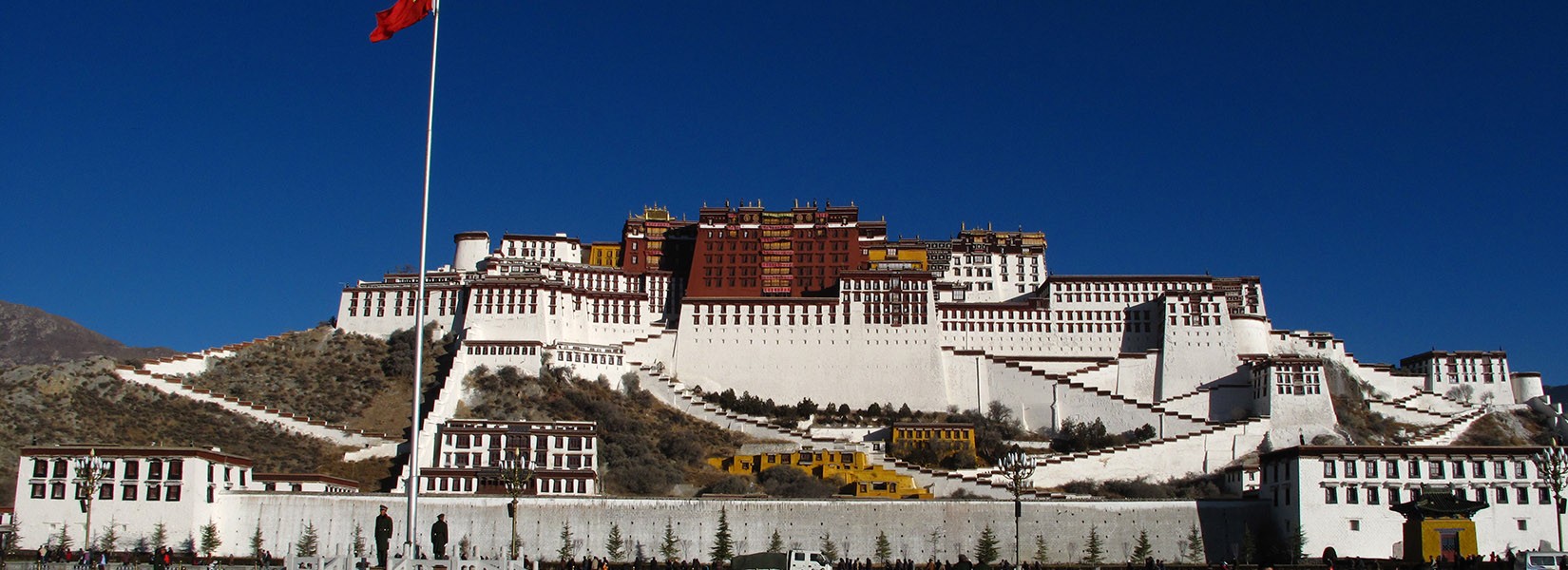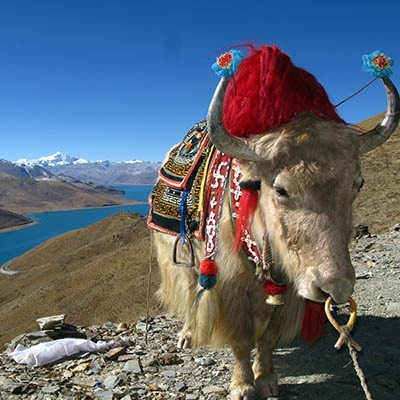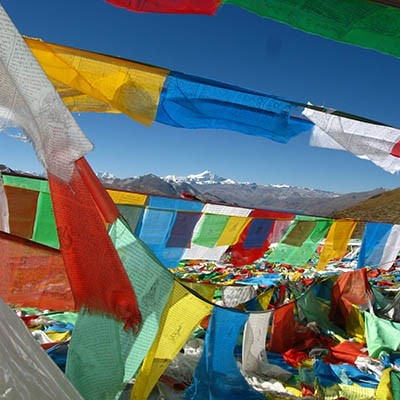Known as the “Roof of the World”, Tibet is one of the most breathtaking and spiritually rich destinations on Earth. Nestled high on the Tibetan Plateau, with an average elevation of over 4,500 m (14,800 ft), Tibet captivates visitors with its vast landscapes, sacred monasteries, and unique culture shaped by centuries of Buddhism.
Bounded by the mighty Himalayas to the south and stretching across endless plateaus and mountain ranges, Tibet is both awe-inspiring and humbling. From the iconic Potala Palace in Lhasa to the remote Mount Kailash, every corner of Tibet offers travelers an encounter with deep spirituality and untamed natural beauty.
Geography and Landscape
Tibet covers an area of around 1.2 million square kilometers, making it one of the most expansive regions in Asia. Its dramatic landscapes are characterized by towering mountains, high-altitude deserts, and serene lakes.
Himalayan Frontiers: Tibet is home to some of the world’s tallest peaks, including Mount Everest (8,848 m / 29,029 ft) on its southern border with Nepal.
Sacred Lakes: Turquoise lakes like Yamdrok-tso, Namtso, and Manasarovar are revered pilgrimage sites and breathtaking natural wonders.
Vast Plateaus: The Tibetan Plateau, the highest in the world, is a land of rugged beauty and wide open skies.
Remote Valleys: Fertile valleys around Lhasa and Shigatse sustain agriculture and house centuries-old monasteries.
This region is often described as otherworldly, with landscapes that combine stark beauty, dramatic mountainscapes, and sacred sites that feel untouched by time.
Culture and People
Tibetan culture is deeply tied to Tibetan Buddhism, which permeates every aspect of life. Colorful prayer flags, chanting monks, spinning prayer wheels, and grand monasteries are found throughout the land.
The Tibetan people are known for their resilience, warmth, and hospitality, living in close harmony with their harsh yet beautiful environment. Nomadic herders, farmers, and spiritual practitioners form the fabric of Tibetan society.
Key cultural highlights include:
Potala Palace (Lhasa): Former residence of the Dalai Lama and a UNESCO World Heritage Site.
Jokhang Temple: Tibet’s most sacred temple, located in the heart of Lhasa.
Monasteries: Drepung, Sera, Tashilhunpo, and many others, each with centuries of spiritual significance.
Festivals: Tibetan New Year (Losar) and Monlam (Great Prayer Festival) showcase vibrant dances, rituals, and prayers.
Trekking in Tibet
Tibet is a dream destination for high-altitude trekkers and pilgrims seeking spiritual adventure. Unlike Nepal and Bhutan, treks here are often more rugged and remote, providing both cultural depth and natural grandeur.
Popular Treks in Tibet:
Everest Base Camp Trek (Tibet Side):
Travel to the north face of Mount Everest, offering spectacular views and a unique perspective of the world’s tallest peak.Mount Kailash Kora:
A sacred pilgrimage trek around Mount Kailash (6,638 m / 21,778 ft), revered by Buddhists, Hindus, Jains, and Bon practitioners. Completing the kora (circuit) is believed to cleanse one’s sins and bring spiritual merit.Ganden to Samye Trek:
A classic cultural and spiritual trek linking two important monasteries, offering alpine landscapes, sacred lakes, and high passes.Namtso Lake Trek:
Trekking near one of Tibet’s holiest lakes with stunning mountain backdrops and opportunities to meet nomadic herders.
Treks in Tibet often involve high altitudes, requiring careful acclimatization, but the rewards are unmatched in terms of scenery and cultural immersion.
Adventure Activities Beyond Trekking
Tibet offers much more than trekking. Adventurers and culture seekers can experience:
Cultural Tours: Explore Lhasa, Shigatse, and Gyantse with their monasteries and fortresses.
Mount Everest Overland Journey: Drive from Lhasa to Everest Base Camp via the Friendship Highway.
Spiritual Retreats: Meditation and monastery stays for deeper spiritual experiences.
Photography Expeditions: Capture dramatic landscapes, ancient rituals, and unique architecture.
Nomadic Encounters: Visit yak-herding communities and learn about their traditions.
Best Time to Visit Tibet
The best time to visit Tibet is during spring (April–June) and autumn (September–October) when the weather is mild, skies are clear, and trekking conditions are favorable.
Spring (April–June): Clear skies, blooming wildflowers, and pleasant temperatures.
Summer (July–August): Warmer but rainy; good for lush landscapes, though roads can be muddy.
Autumn (September–October): Crisp air, excellent mountain views, and vibrant festivals.
Winter (November–March): Very cold, but fewer tourists; some remote areas may be inaccessible.
Why Visit Tibet?
World-Class Trekking: From Everest Base Camp to Mount Kailash, Tibet offers legendary trekking routes.
Spiritual Journeys: Pilgrimage treks, sacred monasteries, and meditation experiences.
Cultural Depth: Ancient traditions, Buddhist rituals, and timeless architecture.
Spectacular Landscapes: Snow peaks, turquoise lakes, and vast plateaus.
Rare Travel Experience: Limited tourism ensures authenticity and a sense of discovery.
Practical Information for Travelers
Visa and Permits: All travelers require a Chinese visa plus a Tibet Travel Permit, arranged through a registered tour operator. Independent travel is not allowed.
Currency: Chinese Yuan (CNY).
Language: Tibetan and Mandarin; English is spoken by guides and in tourist areas.
Connectivity: WiFi is available in cities like Lhasa, limited in remote areas.
Altitude: With average elevations above 4,000 m (13,123 ft), proper acclimatization is essential.
Health & Safety: Travel insurance covering high-altitude trekking is strongly recommended.
Conclusion
Tibet remains one of the most extraordinary destinations in the world, offering travelers a chance to explore stunning Himalayan landscapes while immersing in a deeply spiritual culture. From standing at the foot of Mount Everest to circling the sacred Mount Kailash, from wandering through the halls of ancient monasteries to gazing across endless plateaus, Tibet delivers experiences that resonate long after the journey ends.
For trekkers, adventurers, and seekers of spirituality, Tibet is truly the Roof of the World — where nature, culture, and faith converge in majestic harmony.


